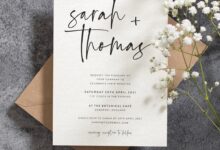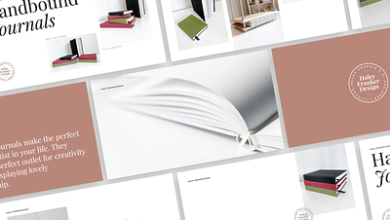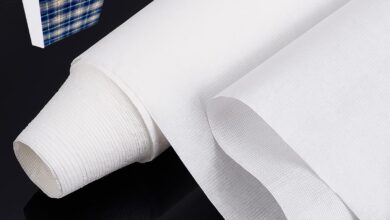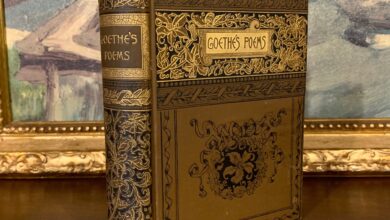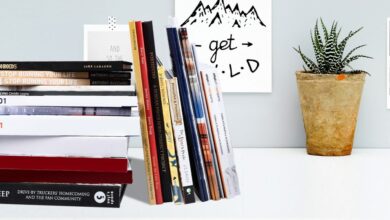Bookbinding for Artists: Incorporating Bindings into Your Artwork
Contents
- 1 An Artistic Journey of Intrinsic Beauty and Functionality
- 2 Introduction: Unleashing the Power of Bound Creativity
- 2.1 1.1 Enhanced Visual Appeal
- 2.2 1.2 Reinforcement of Conceptual Depth
- 2.3 1.3 Functionality and Durability
- 2.4 1.4 Versatility and Experimentation
- 2.5 1.5 Preservation and Presentation
- 2.6 1.6 Expressing Personal Narrative
- 2.7 1.7 Expansion of Artistic Skill Set
- 2.8 2.1 Time-Intensive Process
- 2.9 2.2 Learning Curve and Technical Expertise
- 2.10 2.3 Cost and Accessibility of Materials
- 2.11 2.4 Durability and Fragility
- 2.12 2.5 Limitations in Artistic Expression
- 2.13 2.6 Spatial Considerations
- 2.14 2.7 Artistic Identity and Cohesion
- 3 Table: Bookbinding for Artists: Incorporating Bindings into Your Artwork
- 4 Frequently Asked Questions (FAQs)
- 4.1 1. What materials do I need to start incorporating bookbinding into my artwork?
- 4.2 2. How can bookbinding techniques enhance the impact of my artwork?
- 4.3 3. Are there any online resources or tutorials to help me learn bookbinding?
- 4.4 4. Can I incorporate bookbinding into my digital artwork or paintings?
- 4.5 5. How do I choose the most suitable binding technique for my artwork?
- 4.6 6. How can I overcome the challenges of sourcing specialized materials for bookbinding?
- 4.7 7. Can bookbinding be used to restore or repair damaged artworks?
- 5 Conclusion: Unleash Your Artistic Potential with Bookbinding
An Artistic Journey of Intrinsic Beauty and Functionality
Hello Readers, welcome to an insightful exploration of the enchanting world of bookbinding for artists. This article aims to inspire and guide artists in incorporating exquisite bindings into their artwork, elevating their creations to new heights of aesthetics and functionality.
Introduction: Unleashing the Power of Bound Creativity
Artistic expression knows no bounds, and the integration of bookbinding techniques into artwork provides a captivating opportunity for artists to fuse craftsmanship with their imaginative vision. By embracing the art of bookbinding, artists can not only add a distinct touch of elegance and uniqueness to their creations but also infuse their artwork with a deeper narrative and functionality.
From personalized handmade journals to intricately bound artist books, bookbinding offers artists a diverse range of possibilities to explore. Whether you are a painter, sculptor, mixed-media artist, or any other form of creative enthusiast, understanding the art of bookbinding can open up an array of exciting avenues for your artistic endeavors.
1. The Strengths of Bookbinding for Artists
1.1 Enhanced Visual Appeal
Bookbinding techniques introduce elements such as decorative covers, intricate stitching, and unique bindings that can transform an ordinary piece of artwork into a visually captivating masterpiece. The textures, colors, and patterns of the bindings act as an extension of the artwork, enhancing its overall aesthetic appeal and leaving a lasting impression on the viewer.
1.2 Reinforcement of Conceptual Depth
By incorporating bookbinding into their artwork, artists can add layers of meaning and symbolism to their pieces. The binding itself can become a metaphor or imagery that complements the underlying theme, drawing the viewer into a deeper understanding of the artist’s intended message. This interplay between content and form creates an immersive experience for the audience.
1.3 Functionality and Durability
Bookbinding doesn’t just enhance the visual allure of artwork; it also provides practical benefits. Incorporating bindings into your creations enables the transformation of artwork into functional objects such as sketchbooks, journals, or even sculptural installations. The durability of bookbinding techniques ensures that your artwork will withstand the test of time, preserving your artistic legacy for generations to come.
1.4 Versatility and Experimentation
The realm of bookbinding offers artists endless possibilities for experimentation and exploration. From traditional techniques to innovative approaches, artists can adapt and merge various methods to create unique bindings that complement their artistic style. This flexibility allows for a continuous evolution and growth of artistic expression.
1.5 Preservation and Presentation
Bookbinding techniques provide artists with the means to protect and showcase their artwork in a professional and aesthetically pleasing manner. By binding loose sheets or individual artworks into a cohesive book format, artists can safeguard their creations from damage while also presenting them in a cohesive and cohesive manner.
1.6 Expressing Personal Narrative
For artists seeking to convey their personal stories and experiences, incorporating bookbinding techniques into their artwork serves as a powerful medium. Through the selection of materials, binding styles, and even the inclusion of written or visual content within the bindings, artists can create art pieces that reflect their unique journeys and perspectives.
1.7 Expansion of Artistic Skill Set
Engaging in the art of bookbinding expands an artist’s skill set, offering new opportunities for growth and learning. From mastering stitching techniques to experimenting with materials, embossing, and other binding components, artists can acquire valuable craftsmanship skills that enrich their overall artistic repertoire.
2. The Weaknesses of Bookbinding for Artists
2.1 Time-Intensive Process
Bookbinding can be a time-consuming endeavor, requiring meticulous attention to detail and patience. Artists must dedicate substantial time and effort to master the intricate techniques and complete each binding. However, the meditative and rewarding nature of the process often outweighs the time investment, resulting in an unparalleled sense of accomplishment.
2.2 Learning Curve and Technical Expertise
Mastering the art of bookbinding demands dedication to learning and honing technical skills. Artists may face challenges initially, grappling with stitching methods, adhesive choices, or structural components. However, with practice, perseverance, and resources like workshops or online tutorials, artists can overcome these obstacles and elevate their artistic capabilities.
2.3 Cost and Accessibility of Materials
Obtaining the necessary materials for bookbinding may pose a potential hurdle for artists. Specialty materials, such as archival paper, high-quality binding cloth, and intricate decorative elements, can be costly. Additionally, artists in remote areas may face challenges in sourcing these materials. However, resourcefulness and alternative solutions can help mitigate these limitations.
2.4 Durability and Fragility
While bookbinding techniques enhance the longevity of artwork, some binding styles may be more susceptible to wear and tear. Factors such as environmental conditions, handling, and the materials used in the bindings can impact durability. Artists must strike a balance between aesthetics and functionality to ensure the longevity and preservation of their creations.
2.5 Limitations in Artistic Expression
While bookbinding techniques offer a multitude of creative opportunities, some artists may feel restricted by the traditional nature of certain binding styles. Breaking free from conventional structures and exploring avant-garde approaches may require artists to push boundaries and challenge preconceived notions. However, embracing these limitations can also spark unparalleled innovation and redefine artistic boundaries.
2.6 Spatial Considerations
The incorporation of bindings may introduce spatial challenges for artists, particularly those working in dimensional art forms. Artists must carefully plan the inclusion of bindings to ensure they harmonize with the overall composition. This balance between the artwork and the binding can be a delicate yet rewarding process, resulting in harmonious integration.
2.7 Artistic Identity and Cohesion
Artists must consider how the integration of bookbinding techniques aligns with their artistic identity and body of work. Incorporating bindings should ideally enhance and strengthen an artist’s creative pursuits, rather than appearing as a disconnected element. Maintaining cohesion and consistency throughout artistic exploration is pivotal to ensuring a unified body of work.
Table: Bookbinding for Artists: Incorporating Bindings into Your Artwork
| Binding Technique | Description |
|---|---|
| Traditional Japanese Binding | A stitch-based binding method originating in Japan, known for its simplicity and elegance. |
| Coptic Binding | An ancient form of binding characterized by exposed spine stitching, allowing the book to lay flat when open. |
| Long Stitch Binding | A versatile binding technique using long stitches to secure the pages together. |
| Accordion Fold Binding | A folded page binding technique that creates a harmonious concertina-like effect. |
| Saddle Stitch Binding | A simple and economical binding method using staples to secure the pages. |
| Exposed Stitch Binding | A decorative stitching technique where the stitches are intentionally exposed, adding visual interest. |
| French Link Stitch Binding | A binding method using crisscrossed stitches, resulting in an elegant and stylish pattern. |
Frequently Asked Questions (FAQs)
1. What materials do I need to start incorporating bookbinding into my artwork?
To begin, you will need basic materials such as paper, binding thread or cord, needles, adhesives, and a cutting tool. Additional materials will depend on the specific binding technique you choose.
2. How can bookbinding techniques enhance the impact of my artwork?
Bookbinding adds an extra layer of aesthetic appeal, symbolism, and functionality to your artwork. It allows you to create unique narratives, protect your creations, and present them in a professional manner.
3. Are there any online resources or tutorials to help me learn bookbinding?
Yes, there are various websites, YouTube channels, and online courses dedicated to teaching bookbinding techniques. These resources offer step-by-step instructions, video demonstrations, and helpful tips for beginners and advanced artists alike.
4. Can I incorporate bookbinding into my digital artwork or paintings?
Absolutely! Bookbinding techniques can be applied to a wide range of artistic mediums, including digital prints, paintings, and mixed-media artworks. By binding prints, artists can create unique art books or portfolios to showcase their digital creations.
5. How do I choose the most suitable binding technique for my artwork?
The choice of binding technique depends on various factors such as the nature of your artwork, desired functionality, and personal aesthetics. Experimenting with different techniques will help you discover the perfect binding style that complements your artistic vision.
6. How can I overcome the challenges of sourcing specialized materials for bookbinding?
If you face difficulties finding specific materials, you can explore alternative options. Local craft stores, online marketplaces, and recycling centers often offer cost-effective alternatives. Additionally, joining bookbinding communities or forums can provide valuable insights and recommendations.
7. Can bookbinding be used to restore or repair damaged artworks?
Yes, bookbinding techniques can be utilized to restore and repair damaged artworks, particularly paper-based pieces. Skilled bookbinders can assess the damage and employ appropriate methods to rebind, mend, or reinforce the artwork, rejuvenating its integrity and extending its lifespan.
Conclusion: Unleash Your Artistic Potential with Bookbinding
Incorporating bookbinding into your artwork grants you the opportunity to delve into the enchanting world of craftsmanship and storytelling. From enhancing visual allure and functionality to exploring new artistic territories, the strengths of bookbinding overshadow its few limitations. Embrace this art form, experiment with various techniques, and let the bindings harmonize with your artistic journey.
Take a leap of faith, embark on this creative voyage, and invites readers into a mesmerizing realm where art and bookbinding intertwine seamlessly, inspiring others to explore their own artistic potential and create boundless masterpieces.
Unleash your creativity, blend artistry and craftsmanship, and let your imagination soar as you embark on this enthralling journey of bound creativity.
Note: The content provided in this article is for informational purposes only and should not be considered as professional advice. Always consult experts or professionals in the field for specific guidance and techniques.
Originally posted 2023-09-09 11:01:22.
